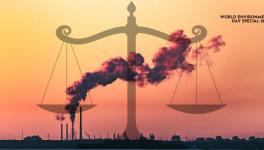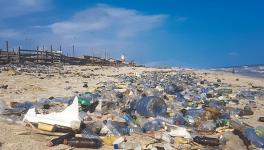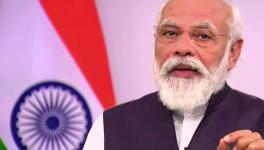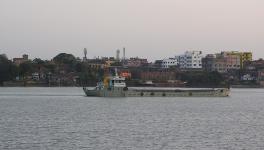World Environment Day: Onto a Brave New World of 'Happy Fashion'
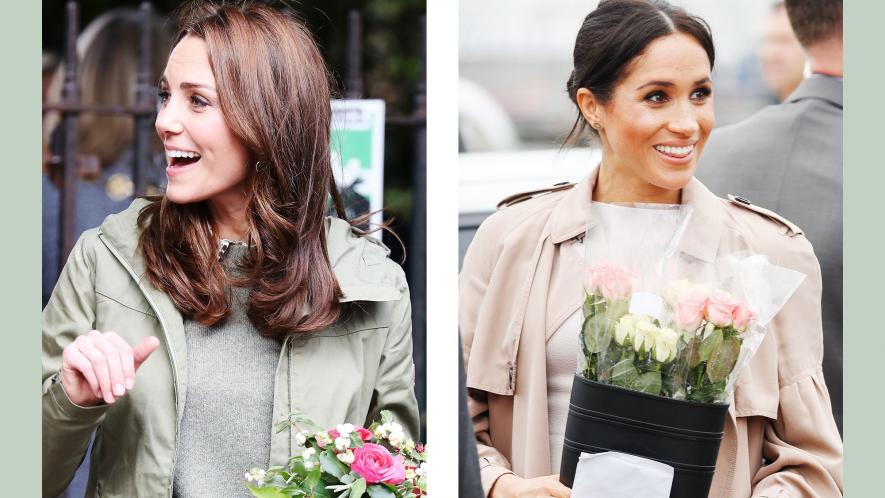
Image Courtesy: Vanity Fair
On April 25, 2019, The Guardian newspaper of UK reported, “With Meghan, Duchess of Sussex, and Kim Kardashian spotted in vintage wear, and its increasing availability on the high street, it could be the answer to sustainable shopping." Please note, vintage wear is about second-hand clothing.
The world is taking note of the humungous negative ecological, social and economic costs of 'Fast Fashion' and moving towards what different people have called ‘Sustainable’ or ‘Eco’ or ‘Slow’ or ‘Ethical Fashion’. The minor differences among these terms apart, I would like to call it as the rise of the ‘Happy Fashion’, and we now need to make it the new style statement.
What is Fast Fashion?
Fashion is, per definition, a phenomenon related to time: a popular style in a certain time and context. This also affects the perception of what is and should be made more "sustainable" -- if fashion should be "fast" or "slow", if it should be more exclusive or inclusive.
"Fast Fashion is the second dirtiest industry in the world, next to Big Oil", noted Eileen Fisher, a clothing industry magnate and a major designer globally. Determining fashion footprint is tough due to the variety of garments. The obvious pollutants are: pesticides used in cotton farming, toxic dyes used in manufacturing and the great amount of waste that discarded clothing creates—but also the extravagant amount of natural resources used in extraction, farming, harvesting, processing, manufacturing and shipping.
Used by large brands, such as Zara, C&A, Peacocks, Primark, Xcel Brands, and Topshop, etc, China has emerged as the largest exporter of fast fashion, accounting for 30% of world apparel exports. The retail revolution within the US (example Wal-Mart, Target, Nike) and Western Europe has fuelled it, where companies no longer manufacture but rather contract out their production and have transformed themselves into key players in design, marketing, and logistics, introducing many new different product lines manufactured in foreign-owned factories in China and Bangladesh.
As production and labour costs rise in China, the largest producer of clothing, companies are moving to countries where manufacturing is cheaper, such as Bangladesh, Vietnam, Pakistan and the Philippines, importing cotton from China and India. Fast fashion, poor infrastructure and poorer wages compounded to kill nearly 1,135 workers in the Rana Plaza garment factory accident in Bangladesh on April 24, 2013, and since then April 24 has been observed as Fashion Revolution Day world-over, calling for ‘Slow and Sustainable Fashion’, and to encourage people to investigate and question the origin of their clothes, through a movement named #WhoMadeMyClothes.
Slow & Sustainable Fashion
The slow fashion or conscious fashion movement has arisen in opposition to fast fashion. Elizabeth L. Cline's 2012 book, Overdressed: The Shockingly High Cost of Cheap Fashion, was one of the first investigations into the human and environmental toll of fast fashion. She used the term ‘Slow Fashion’ first. It is a fashion concept that reflects a perspective, which respects human living conditions, biological, cultural diversity and scarce global resources and creates unique, personalised products. Slow fashion consists of durable products, traditional production techniques or design concepts that are season-less.
Organic cotton, a sustainable alternative for fabric, is grown in a way that uses methods and materials that lessen the impact on our environment. H&M is the largest buyer of organic cotton. Eileen Fisher's company is already using 84% organic cotton, 68% organic linen and is reducing water use and carbon emissions and working to make its supply chain sustainable by 2020.
Through the utilisation of recycled material for the manufacturing of clothing, this provides an additional realm of economic world profit. Sustainable clothing provides a new market for additional job opportunities, continuous net flow of money in the economy, and the reduction of raw materials and virgin resources. Source reduction or reducing the use of raw materials and virgin resources can ultimately reduce carbon emissions during the manufacturing process as well as the resources and carbon emissions that are related to the transportation process. This also prevents the unsustainable usage of extracting materials from the earth by making use of what has already been used (i.e. recycling).
Goals of Sustainable Fashion
- (A) Reduce: consumers need to drastically reduce the number of many cheap clothes and have better quality, eco-friendly and expensive lesser clothes (at comparable costs finally).
- (B) Re-use: Only around 20% of clothing is recycled or reused, huge amounts of fashion product end up as waste in landfills or is incinerated. The average American throws away nearly 70 pounds of clothing per year. This is affecting China and India too.
- (C) Recycle: The limited range of recycled materials available reflects the market dominance of cheap virgin fibres and the lack of technological innovation in the recycling industry, which can be harnessed to create new value chain of older clothes.
- (D) Upcycle: Upcycling creates something new and better from the old or used or disposed clothes. Upcycling aims at the development of products truly sustainable, affordable, innovative and creative. For example, downcycling produces cleaning rags from worn T-shirts, whereas upcycling recreates the shirts into a value-added product like unique handmade braided rug. Example: RECLAIM brand by Orsola de Castro
Why & How of Sustainable 'Happy' Fashion?
Sustainable fashion is not about the high price it usually has, but about the ecological costs considerations due to cheap fast fashion. If you make sustainable, ecology and fair wages to labour as priorities, you’re going to spend more as a consumer and you’re going to charge more as a seller. There are ways to partly compensate for these high costs by making innovative changes to the standard business model (for example, selling directly to the consumer).
Sadly, sustainability tends to sit in the corporate social responsibility arm of fashion companies, far from the design department. Looking ahead, we need alternative fabrics and to talk about them: pros and cons of second hand, slow and fair fashion, vegan, organic cotton, clothing swaps, minimalism, local production and recycled materials.
And for consumers this means thinking about what you buy, knowing which philosophies you are supporting through your purchases. Tell stories digitally and make them viral. Fashion branding should take less the fashion show route, more the fashion talk route around sustainability and responsible buying.
Another super sustainable solution is vintage clothing or buying second-hand, because the pieces already exist, so you are saving the entire negative impact of production. Buying high-quality second-hand or vintage pieces is the best way to go, if your budget allows it. Ensuring fair wages supports education and directly improves worker's quality of life. Also, garment transport puts out a huge amount of CO2, which can be reduced by minimising the distances during production. So, the eco-system of fashion must encourage local production.
Using and propagating organic cotton helps, as it saves us from pesticides and is better for the health and land of the farmers, and also protects wildlife. Organic is always better, however fabrics like tencil, lensing, and hemp offer comparable qualities and need less water for production. This entails a battle against genetically modified BT cotton, which has taken Indian cotton farming by storm, sadly with political backing.
So ‘Happy Fashion’ of tomorrow needs to focus on the 3R’s of the environment: Reduce, Reuse, and Recycle; and 3 Legs of Sustainability": Economics, Ecology, and Social Equity, using natural and organic fibres as much as possible, not harming animals.
Venturing into a new industry is difficult and choosing to take a stand on environmental sustainability and ethical manufacturing practices will require serious dedication, but the effort will eventually put you into contact with amazing craftspeople, dedicated manufacturers, and people around the globe who care about the future of our planet.
The writer is a media academic, columnist, TV studio debate participant, and has spoken on this theme recently in Debrecen Fashion Film Festival, Hungary. The views are personal.
Get the latest reports & analysis with people's perspective on Protests, movements & deep analytical videos, discussions of the current affairs in your Telegram app. Subscribe to NewsClick's Telegram channel & get Real-Time updates on stories, as they get published on our website.









